I believe that my group were quite successful in getting our idea across during the presentation.
A number of points were made (good & bad) based on our animation.
The combination of audio & visuals was a ood mixture. The feedback given was that the animation had a perfect balance and did not contain any irrelevant information.
One of the bad points was that during the audio I had abreviated the word Carburetor to Carb. This was out of habbit and as nobody (including me) noticed this wasnt changed earlier.
Another idea that was given to us was at the start of the animation, the audio started quite quickly. When the audio got edited for the final time, pieces of audio were edited out. Including the opening speech. If it is decided that the museum would like to use our animation then this can easily be edited.
I am proud of what was said about the groups animation. There were no major problems, and it seemed to be a mixed reception on whether the voice over had the correct pitch and speed.
Another point made to the entire class was the fact that they had little contact with any of the groups. This is definatly a major learning curve for the future. By working alongside the museum, it would have made the creation of the animation easier where we wouldnt have had to guess what they would have preffered content wise.
But this was probably the most vital piece of feedback we were given.
Thursday, 10 December 2009
Tuesday, 8 December 2009
Evaluation
Group:
At the start of this project I will admit that I was worried with the group that I was set. This was due to no-one living local to the university so I wasn't sure how easy it would be to set group meetings.
As time went on though, I realised that I was within a highly motivated team. Everyone got stuck in, did what they were asked and showed alot of interest in the project. It helped that we all wanted the same from this project, to learn off of each other and produce the best we could.
I will admit there were arguments within the group. But we showed maturity in that it didn't effect our work. I
Shuo, Rob and Kiel all produced the best they could and I believe it shows with the work we have managed to produce.
My Work:
I was set a number of tasks that varied in what software I had to use. So this project has enabled me to learn a few new tricks.
With the modelling of the piston, the shapes looked correct. The problem came when importing them into a different version of 3DS, as you can see from the video, one of the cam shafts is very untidy, and it apparent in the video.
Due to time running out we decided to stick with what we had.
By overlooking what the others were modelling I did manage to learn more techniques. Rob showed how to position lights and setup realistic shadows; he also taught me an animation technique using wireframe and the slice modifier (shown on the sparkplug earlier in the blog)
Given more time then the only piece I would change on the animation is showing how the engine works within the lawnmower. Considering none of the group had any prior knowledge on the 2 stroke engine I am very pleased with the outcome.
At the start of this project I will admit that I was worried with the group that I was set. This was due to no-one living local to the university so I wasn't sure how easy it would be to set group meetings.
As time went on though, I realised that I was within a highly motivated team. Everyone got stuck in, did what they were asked and showed alot of interest in the project. It helped that we all wanted the same from this project, to learn off of each other and produce the best we could.
I will admit there were arguments within the group. But we showed maturity in that it didn't effect our work. I
Shuo, Rob and Kiel all produced the best they could and I believe it shows with the work we have managed to produce.
My Work:
I was set a number of tasks that varied in what software I had to use. So this project has enabled me to learn a few new tricks.
With the modelling of the piston, the shapes looked correct. The problem came when importing them into a different version of 3DS, as you can see from the video, one of the cam shafts is very untidy, and it apparent in the video.
Due to time running out we decided to stick with what we had.
By overlooking what the others were modelling I did manage to learn more techniques. Rob showed how to position lights and setup realistic shadows; he also taught me an animation technique using wireframe and the slice modifier (shown on the sparkplug earlier in the blog)
Given more time then the only piece I would change on the animation is showing how the engine works within the lawnmower. Considering none of the group had any prior knowledge on the 2 stroke engine I am very pleased with the outcome.
Environment added
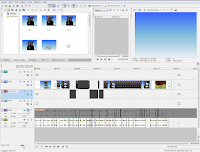
Kiels environment works really well alongside the rest of the animation. He has managed to produce a good environment which doesn't look out of place when the lawnmower was added.
There are a couple of faults with the final animation though. Due to different files being used for rendering, the cam on the piston changes colour.
Another problem is with when the lawnmower is within the environment, I was asked to stop the lawnmower, so that it allowed the viewer to take in what was being seen. I took this literally so just used a static shot. What I didn't realise was that Kiel meant stop the lawnmower but keep the camera moving. So this has to be rendered again.
The final problem is with the audio, from feedback it was said that the speech was too fast, and gave the viewer no time to take in the information.
I decided to record the audio again, but due to illness the sound quality was extremely poor.
Instead I have decided to cut the initial audio into more precise information to give a better impression to the viewer.
To get the final shot correct on the animation with the environment, i had to adjust the curve editor to stop the wheels spinning. I wasn't able to completely stop that from happening, all I could do was set a segment where they didn't move before it would loop back again.
This was due to the animation being setup by Rob, and as I was unsure of where to move pieces I had to improvise. This worked well and enabled me to complete the editing succesfully.
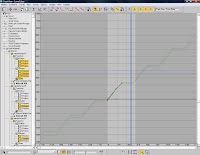
Thursday, 3 December 2009
Editing
Once the animations had been rendered within 3DS, it was down to me to edit the video to coincide with the audio.
The idea was to slow down the specific sections within the video editor. I don't believe this is a good idea as it will gradually reduce the quality of the videos. This is due to the frame rate that we have used (30fps). I believe that the sections of video should have been edited within 3DS before rendering. Once I have shown the group the completed video I hope to bring up the problem of video quality at the next meeting.
I decided to use Sony Vegas Studio 9.0 to edit the video as this gave me the most control over editing the footage. The main control required was the slowing down and speeding up of the video.
At present this is the video that has been produced, the only thing missing is the environment at the end which Kiel is producing (Garden including trees, shed and grass)
The idea was to slow down the specific sections within the video editor. I don't believe this is a good idea as it will gradually reduce the quality of the videos. This is due to the frame rate that we have used (30fps). I believe that the sections of video should have been edited within 3DS before rendering. Once I have shown the group the completed video I hope to bring up the problem of video quality at the next meeting.
I decided to use Sony Vegas Studio 9.0 to edit the video as this gave me the most control over editing the footage. The main control required was the slowing down and speeding up of the video.
At present this is the video that has been produced, the only thing missing is the environment at the end which Kiel is producing (Garden including trees, shed and grass)
Tuesday, 24 November 2009
Animation
The task of animation has been left for group meetings and in class. This way each group member can express their feelings if they believe the animation does not quite work.
The video editing and rendering has been tasked to me.
Utilising Robs knowledge has been key, it was his diea to animate the engine being created through wireframe and overlapped with the model.
Once Rob had positioned the lighting and the camera he produced this opening shot.
I had previously learnt from this and replicated it when displaying the spark plug earlier in the blog. Even though I may not have the current knwoledge, I am finding it increasingly important to learn off other group members.
We found that there was a problem with the 2nd stage of the animation. The 2 shots did not line up due to the cameras being miss aligned.
For this I decided that the easiest way would be to rescale the engine to get the dimensions as close as possible to the initial render. Another problem was the shadow in the initial render had been deleted from the 2nd stage.
Before:
After:
By looking closely at the end of before video, you can see that the piston shaft doesn't match up with the Cam. It appears to be rotating on its own.
The group were stumped by this, but after going through the key frames I found that the problem was with the keyframes not aligning, so after a few rotations the shaft moved further and further out of line.
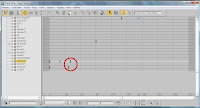
Problem solved:
The next stage was to animate the top of the Piston and to start animating the flow of liquids and gases within the engine.
We decided to use the slice modifier to animate the liquids and used.
This video gives a rough indication of how the piston will be animated. The movement still needs to be fine tuned and textures also have to be added.
The video editing and rendering has been tasked to me.
Utilising Robs knowledge has been key, it was his diea to animate the engine being created through wireframe and overlapped with the model.
Once Rob had positioned the lighting and the camera he produced this opening shot.
I had previously learnt from this and replicated it when displaying the spark plug earlier in the blog. Even though I may not have the current knwoledge, I am finding it increasingly important to learn off other group members.
We found that there was a problem with the 2nd stage of the animation. The 2 shots did not line up due to the cameras being miss aligned.
For this I decided that the easiest way would be to rescale the engine to get the dimensions as close as possible to the initial render. Another problem was the shadow in the initial render had been deleted from the 2nd stage.
Before:
After:
By looking closely at the end of before video, you can see that the piston shaft doesn't match up with the Cam. It appears to be rotating on its own.
The group were stumped by this, but after going through the key frames I found that the problem was with the keyframes not aligning, so after a few rotations the shaft moved further and further out of line.

Problem solved:
The next stage was to animate the top of the Piston and to start animating the flow of liquids and gases within the engine.
We decided to use the slice modifier to animate the liquids and used.
This video gives a rough indication of how the piston will be animated. The movement still needs to be fine tuned and textures also have to be added.
Textures
I was given the task of producing textures for the animation. Rob had already produced the gradient environment background so it was down to me to produce the lower engine casing, flywheel, upper engine as well as textures for the fluids within the engine.
It is important not to overpower the viewer with the textures, if this happens then it will take their concentration away from what the video is describing.
We could have produced a full chrome engine that was really shiny. But this could be a distraction.
We also wanted each part of the engine to be contrasting so that it was easiyl distinguishable for the viewer.
The lower engine case was to have a matte colour that did not shine.We did not want the base to be smooth either as looking at the original reference pictures show that the engine was quite bumpy.
This is the texture that I was able to produce within photoshop. A bump map was added to it within 3DS and by adjusting the settings I was able to produce a suitable texture.

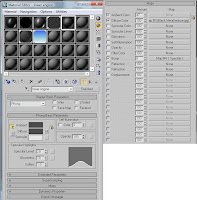
The upper engine was to have a slightly shinier surface but not so shiny that it would react like a mirror.
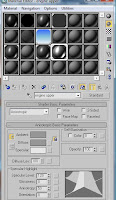
The group decided against producing such a reflective material due to the rendering times. So it was decided to keep this fairly basic. It was noticed that some groups were having problems rendering due to the size of the animation and the materials they were using.
The flywheel was to have a lsightly different colour to allow it to stand out. I went for a brown color that was more reflective than the engine. From the previous research gathered on engine components it showed that the flywheel had a shinier texture so we decided to follow this as a guideline.
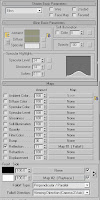
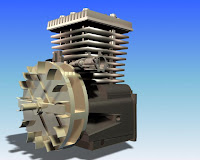
The material for the sparkplug was setup using IDs. This allowed me to save space within the materiale editor and use one slot to produce the multiple materials for one object.
A spark plug has fairly plain colours so I decided to use basic colours for the centre and the tip of the object.
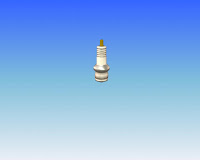
I then used a lighter version of the lower engine casing material and edited it to produce a shinier effect.
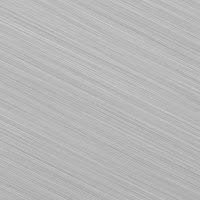
Other important textures produced were for the inside of the engine. I went for an oily look for this, I decided to keep it quite dark due to the lack of the light within the inside of the engine
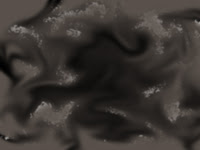
A the radial gradient tool was used within Photoshop to produce the texture of the combustion within the engine.
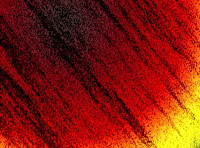
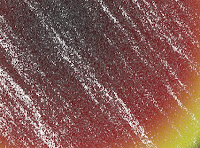
Using a variety of filter effects such as plastic wrap, noise and gaussian blur to produce the texture for the air mixture within the engine.
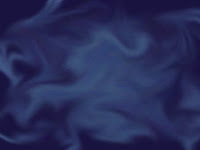
I have produced two copies of the combustion texture as an opacity map could be added to the white version to produce a more realistic looking animation.
The final texture produced was the smoke. This was very simple to produce, using the clouds filter and altering the hue, brightness and contrast.
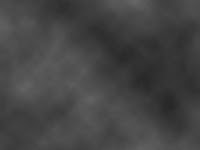
It is important not to overpower the viewer with the textures, if this happens then it will take their concentration away from what the video is describing.
We could have produced a full chrome engine that was really shiny. But this could be a distraction.
We also wanted each part of the engine to be contrasting so that it was easiyl distinguishable for the viewer.
The lower engine case was to have a matte colour that did not shine.We did not want the base to be smooth either as looking at the original reference pictures show that the engine was quite bumpy.
This is the texture that I was able to produce within photoshop. A bump map was added to it within 3DS and by adjusting the settings I was able to produce a suitable texture.


The upper engine was to have a slightly shinier surface but not so shiny that it would react like a mirror.

The group decided against producing such a reflective material due to the rendering times. So it was decided to keep this fairly basic. It was noticed that some groups were having problems rendering due to the size of the animation and the materials they were using.
The flywheel was to have a lsightly different colour to allow it to stand out. I went for a brown color that was more reflective than the engine. From the previous research gathered on engine components it showed that the flywheel had a shinier texture so we decided to follow this as a guideline.


The material for the sparkplug was setup using IDs. This allowed me to save space within the materiale editor and use one slot to produce the multiple materials for one object.
A spark plug has fairly plain colours so I decided to use basic colours for the centre and the tip of the object.

I then used a lighter version of the lower engine casing material and edited it to produce a shinier effect.

Other important textures produced were for the inside of the engine. I went for an oily look for this, I decided to keep it quite dark due to the lack of the light within the inside of the engine

A the radial gradient tool was used within Photoshop to produce the texture of the combustion within the engine.


Using a variety of filter effects such as plastic wrap, noise and gaussian blur to produce the texture for the air mixture within the engine.

I have produced two copies of the combustion texture as an opacity map could be added to the white version to produce a more realistic looking animation.
The final texture produced was the smoke. This was very simple to produce, using the clouds filter and altering the hue, brightness and contrast.

Sound Clip Part 2
I have managed to finally complete quality editing of the audio for the animation.
By using the software Audacity I was able to produce the sound clip so that the voice appeared slightly higher pitched, which also increased the clarity of the speech. This will benefit the viewers as it will become more understandable.
Within Audacity minimal changes were made, just adjusting the Octave of the voice from a C to an F was enough to get the result I was seeking.
Before:
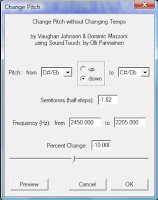
After:
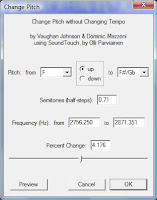
One final effect was added to the audio which would amplify the voice more. If kept as it is the audio appeared flat and quite boring. So it was decided to import the audio back in Cakewalk Sonar 6 and add a reverb effect.
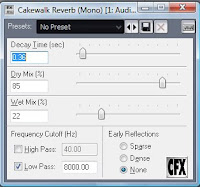
Final Audio (quality editing):
Even though the quality of the audio has now been edited there is still work to do with it. Once the animation has been completed the audio will be adjusted to keep in time with the animation. At the moment some parts of the audio appear slow, and other parts too fast.
By using the software Audacity I was able to produce the sound clip so that the voice appeared slightly higher pitched, which also increased the clarity of the speech. This will benefit the viewers as it will become more understandable.
Within Audacity minimal changes were made, just adjusting the Octave of the voice from a C to an F was enough to get the result I was seeking.
Before:

After:

One final effect was added to the audio which would amplify the voice more. If kept as it is the audio appeared flat and quite boring. So it was decided to import the audio back in Cakewalk Sonar 6 and add a reverb effect.

Final Audio (quality editing):
Even though the quality of the audio has now been edited there is still work to do with it. Once the animation has been completed the audio will be adjusted to keep in time with the animation. At the moment some parts of the audio appear slow, and other parts too fast.
Subscribe to:
Posts (Atom)